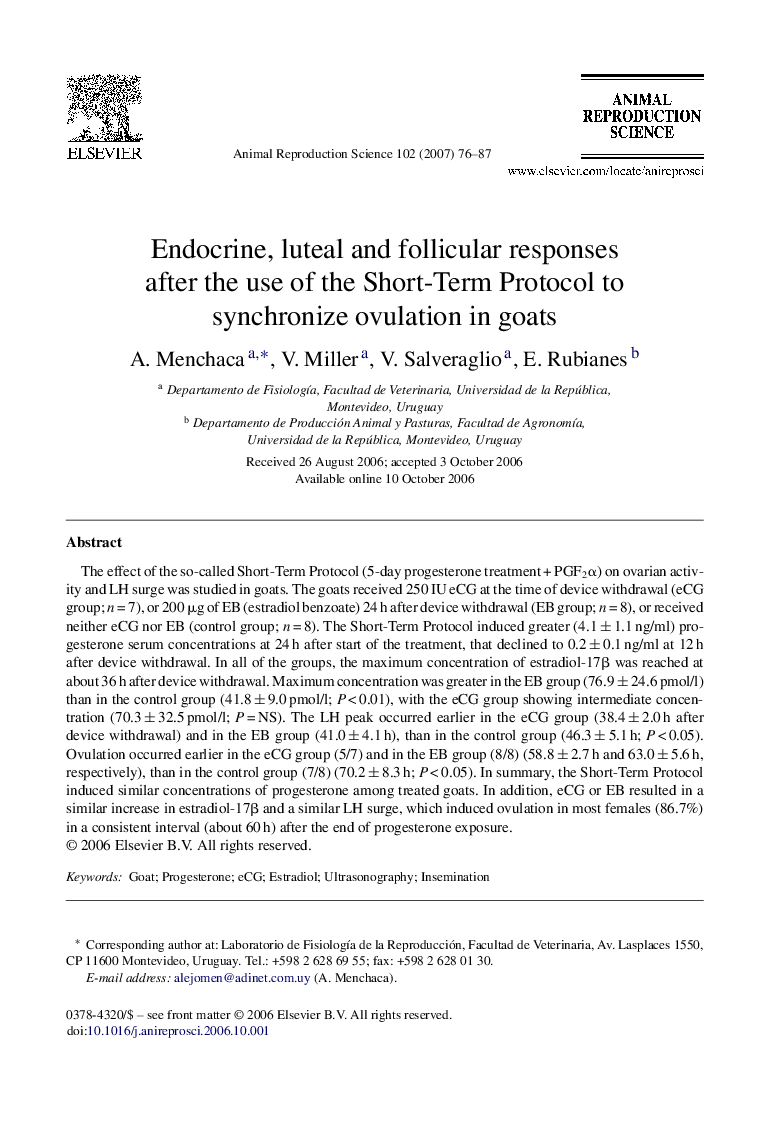| Article ID | Journal | Published Year | Pages | File Type |
|---|---|---|---|---|
| 2074517 | Animal Reproduction Science | 2007 | 12 Pages |
The effect of the so-called Short-Term Protocol (5-day progesterone treatment + PGF2α) on ovarian activity and LH surge was studied in goats. The goats received 250 IU eCG at the time of device withdrawal (eCG group; n = 7), or 200 μg of EB (estradiol benzoate) 24 h after device withdrawal (EB group; n = 8), or received neither eCG nor EB (control group; n = 8). The Short-Term Protocol induced greater (4.1 ± 1.1 ng/ml) progesterone serum concentrations at 24 h after start of the treatment, that declined to 0.2 ± 0.1 ng/ml at 12 h after device withdrawal. In all of the groups, the maximum concentration of estradiol-17β was reached at about 36 h after device withdrawal. Maximum concentration was greater in the EB group (76.9 ± 24.6 pmol/l) than in the control group (41.8 ± 9.0 pmol/l; P < 0.01), with the eCG group showing intermediate concentration (70.3 ± 32.5 pmol/l; P = NS). The LH peak occurred earlier in the eCG group (38.4 ± 2.0 h after device withdrawal) and in the EB group (41.0 ± 4.1 h), than in the control group (46.3 ± 5.1 h; P < 0.05). Ovulation occurred earlier in the eCG group (5/7) and in the EB group (8/8) (58.8 ± 2.7 h and 63.0 ± 5.6 h, respectively), than in the control group (7/8) (70.2 ± 8.3 h; P < 0.05). In summary, the Short-Term Protocol induced similar concentrations of progesterone among treated goats. In addition, eCG or EB resulted in a similar increase in estradiol-17β and a similar LH surge, which induced ovulation in most females (86.7%) in a consistent interval (about 60 h) after the end of progesterone exposure.
